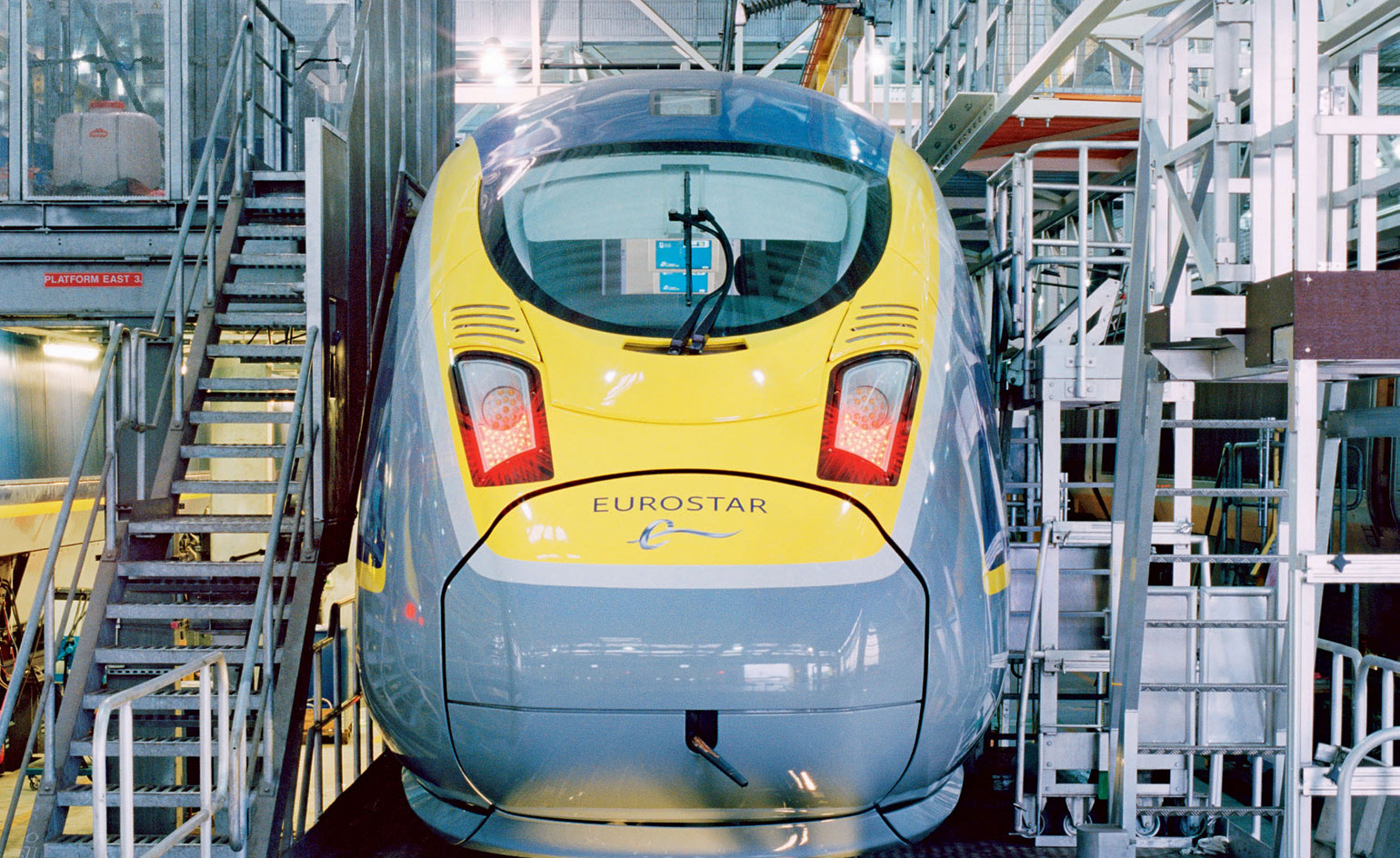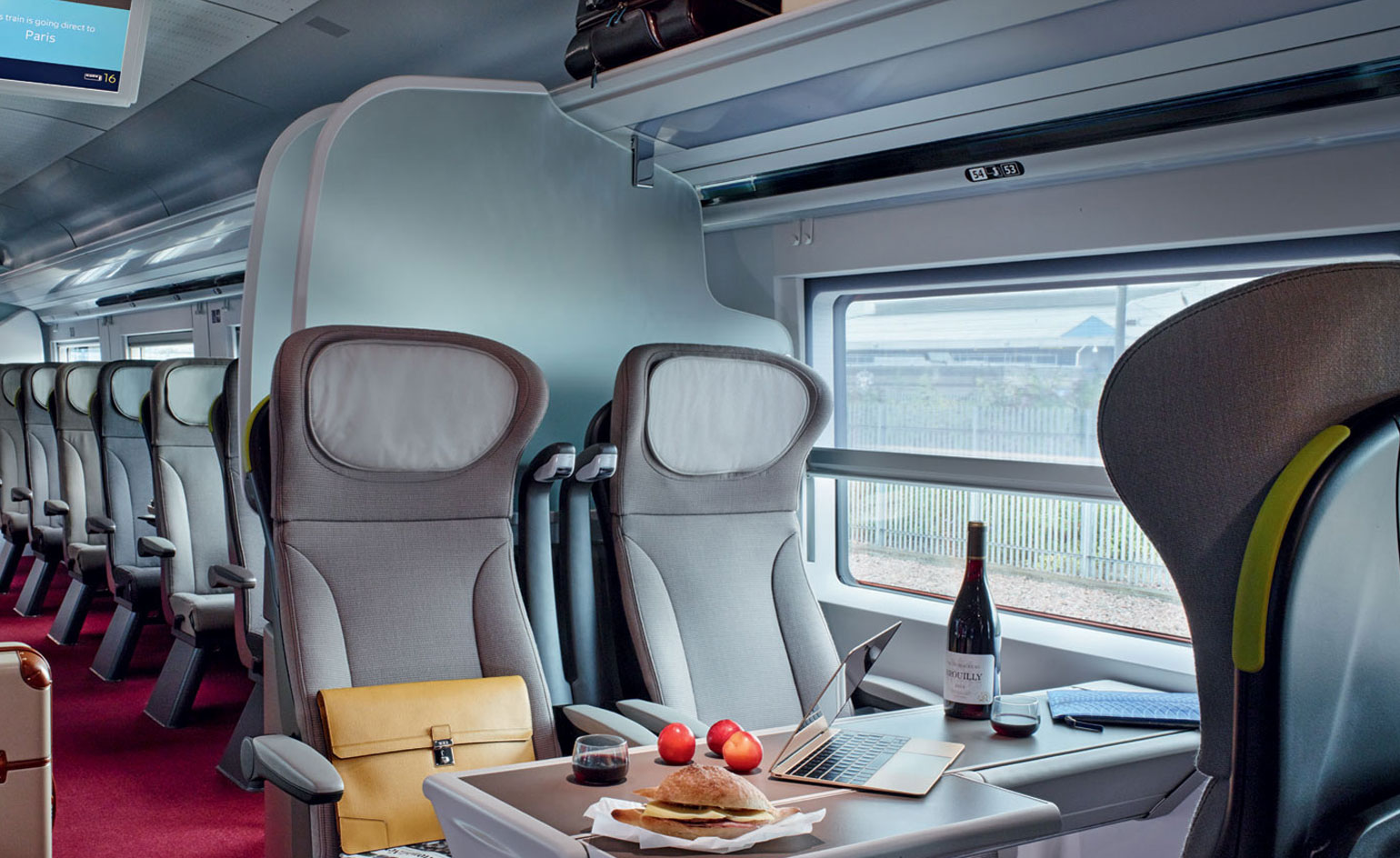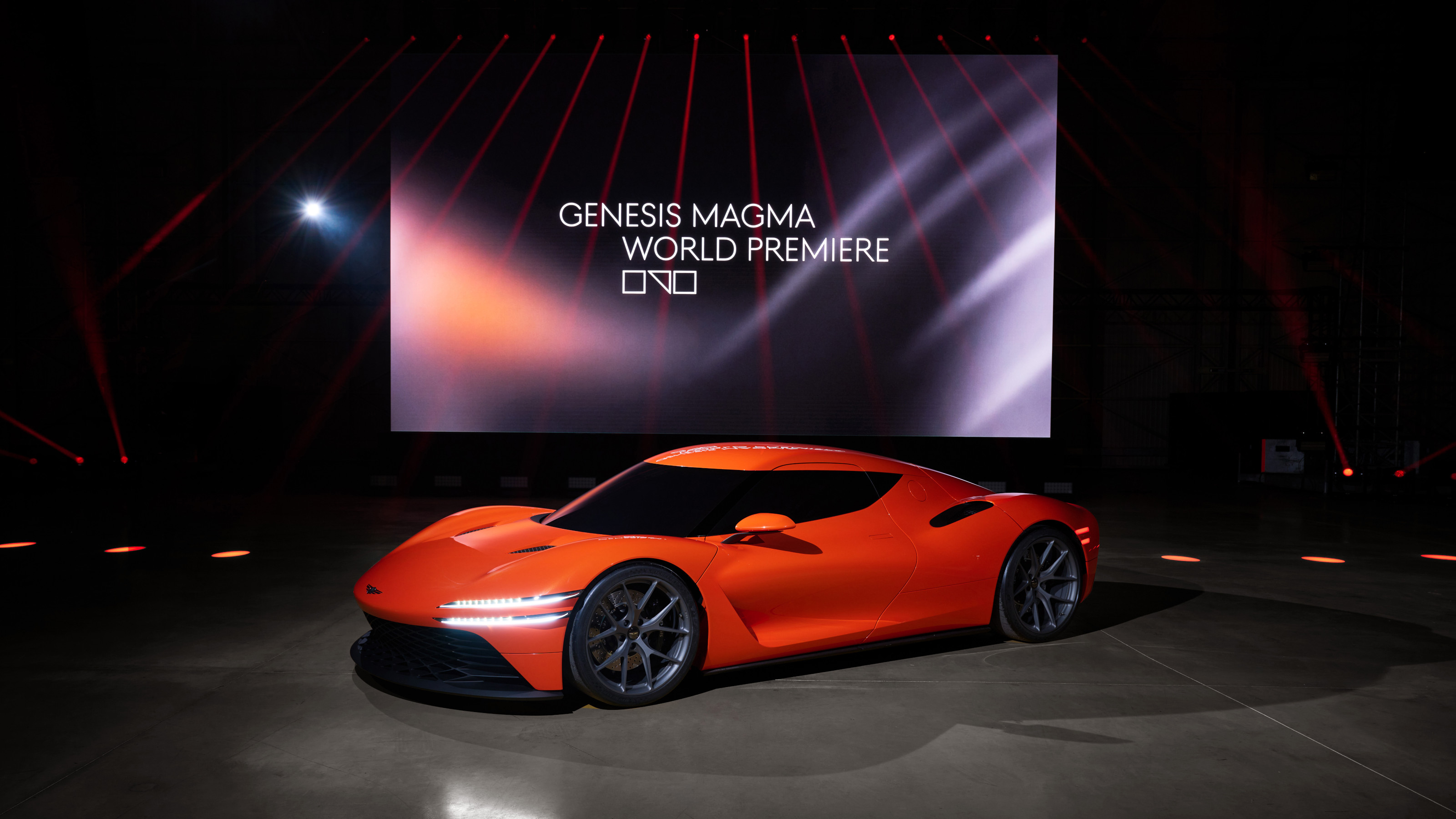Track team: Eurostar’s new Pininfarina-designed, top-of-the-line fleet

At the end of this year, a new fleet of Eurostar trains will make its debut journey between London and Paris, soon to be joined by more trains to cover the company’s other European routes. Although these are the now-familiar Siemens-designed e320 Velaro trains, they have been given a radical makeover by Italian design and engineering firm Pininfarina.
For the past six years, the Turin-based company has been working closely with Eurostar and Siemens to apply its signature design touch to the coaches’ interiors as well as to the train’s exterior, through a new livery that enhances the train’s aesthetics using colours and lines. ‘We developed a striped colour composition, integrating the train’s windows and giving a fresh interpretation of the Eurostar colour identity,’ explains Fabio Filippini, Pininfarina’s vice-president of design. The new livery incorporates both the traditional blue and yellow hues that are Eurostar’s signature, as well as a band of silver that, the designer explains, is closer to automotive design, offering an aesthetic that goes beyond functionality and giving a sense of speed and quality to the new feet.
But the coaches’ interiors are where the new design identity is fully expressed: the team’s starting point was Eurostar’s desire to increase capacity (the new trains will carry 900 passengers, versus the 750 of the old feet), while at the same time improve each passenger’s personal space, comfort and environment. ‘It’s an apparently contradictory request,’ notes Filippini, ‘which is, in a way, the life of a designer: working with conflicting conditions to find the best solutions.’
The new interiors are a combination of vision and pragmatism: Pininfarina’s concept involved creating an environment that feels more open and fluid, while working within the constraints that come with the request for increased space, ergonomics and safety, and the company’s commitment to passenger experience. The design focused on employing colour to enhance the experience inside the train; the team thought it was important to create a continuous flow throughout the coaches, achieved via rich burgundy and ochre shades on the ceilings and floors and a subtle alternation of different hues on each row of seats. The latter, Filippini explains, is both to enhance the feeling of a private space but also a practical matter: by diversifying each row’s colour, it will be easier for passengers to spot their seat when they return to it.
The practical elements of the seats’ design were also tackled by Pininfarina with its usual 360-degree approach: the slimmed-down seats are now part of a clear, intuitive layout integrating all accessories, from plugs, reading lights and storage to cup holders. Although materials had to be compliant with restrictive regulations, the team managed to sneak in some quintessential Italian design details, borrowed from contemporary furniture as well as from the automotive world: for example, the leather headrests are trimmed with a signature Eurostar-yellow stitching, ‘a high-quality handmade trimming which is typical of Italian carrozzeria’, explains Filippini. He describes these touches throughout the train as ‘subtle vibrations that make everything a bit more dynamic’.
The approach to the project was the same the Italian company offers when it works on luxury cars for Ferrari or Maserati. Filippini notes that everything it designs follows the three principles of Pininfarina’s DNA: elegance, purity and innovation. These are all the more relevant here, with a new fleet of trains that has to be durable both from a manufacturing point of view and also, perhaps most importantly, from an aesthetic perspective. The engineering background of Pininfarina allows for an innovative approach to design problem-solving that breaks boundaries. ‘Everything in the train answers to a functional demand,’ Filippini concludes, ‘but we try to answer it with the most elegant, simple and pure gesture.’
As originally featured in the October 2015 edition of Wallpaper* (W*199)

The new-look interiors by Pininfarina, with 'Bellagio' truck, £650, by Bric's. 'Astor Drexel' briefcase, £345, by Tumi. MacBook Gold, from £1,049, by Apple. Wine and glasses, Eurostar's own. 'No. 9' wallet, £200, by Paul Smith. In storage above seats, briefcase, €755, by Piquadro. 'Bellagio' trunk, £550, by Bric's
INFORMATION
Photography: Jamie McGregor Smith
Receive our daily digest of inspiration, escapism and design stories from around the world direct to your inbox.
Rosa Bertoli was born in Udine, Italy, and now lives in London. Since 2014, she has been the Design Editor of Wallpaper*, where she oversees design content for the print and online editions, as well as special editorial projects. Through her role at Wallpaper*, she has written extensively about all areas of design. Rosa has been speaker and moderator for various design talks and conferences including London Craft Week, Maison & Objet, The Italian Cultural Institute (London), Clippings, Zaha Hadid Design, Kartell and Frieze Art Fair. Rosa has been on judging panels for the Chart Architecture Award, the Dutch Design Awards and the DesignGuild Marks. She has written for numerous English and Italian language publications, and worked as a content and communication consultant for fashion and design brands.
-
 Wang Shu and Lu Wenyu to curate the 2027 Venice Architecture Biennale
Wang Shu and Lu Wenyu to curate the 2027 Venice Architecture BiennaleChinese architects Wang Shu and Lu Wenyu have been revealed as the curators of the 2027 Venice Architecture Biennale
-
 Genesis turns up the heat with its new Magma performance sub-brand
Genesis turns up the heat with its new Magma performance sub-brandGenesis has revealed the hot new GV60 Magma and striking Magma GT Concept in its quest to own luxury performance
-
 Inside the design of Hamnet, a tale of Shakespeare’s real tragedy
Inside the design of Hamnet, a tale of Shakespeare’s real tragedyChloé Zhao’s new film Hamnet follows the tragedy and tenderness that led to Shakespeare’s seminal play, Hamlet. Production designer Fiona Crombie tells how she reimagined the Tudor-era spaces that shaped that very work